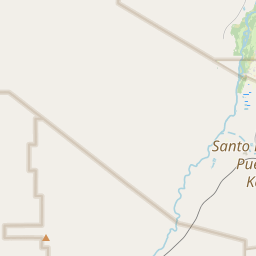Maria Gertrudis Barcelo, "Doña Tules" (ca. 1800–1852)
Historical marker location:






Maria Gertrudis Barceló or Doña Tules, a notorious gambler and courtesan, operated a gambling house and saloon on Burro Alley in Santa Fe. She traveled up El Camino Real from Sonora, Mexico in 1815. Bishop Jean-Baptiste Lamy allowed this controversial lady to be buried in the south chapel of La Parroquia, the Santa Fe parish church, and used the money from her funeral for badly-needed repairs
The Historic Women Marker Initiative of 2007 captured the public’s imagination. It has received international attention for its ambitious goal of telling women’s history in New Mexico on some of the state’s 650 Official Scenic Historic Markers. Before 2007, perhaps three markers mentioned women at all.
The lives of the only known female Buffalo solider, one of the world’s most famous artists, and unsung heroes like Sally Rooke who gave her life at her switchboard warning Folsom’s citizens of a wall of water approaching their town are honored on 75 women’s history markers.
The first phase of the Initiative concluded in 2010. Ten more markers were installed in 2015 and an additional 25 are expected to bring their numbers to an even 100 in the coming years. The program is a partnership of the New Mexico Women’s Forum, HPD, CPRC, New Mexico Department of Transportation, and the public. The 2006 legislature made the initial 65 historic markers possible.
Like all state historic markers, the women’s history markers are designed in the Park Service Rustic style adopted when the program began in 1935. What’s different is their perspective of New Mexico history.
New Mexico was the birthplace of several famous figures in American history, including the outlaw Billy the Kid, the physicist J. Robert Oppenheimer, and the astronaut Harrison Schmitt, who was one of the last men to walk on the moon.
In the 16th century, Spanish explorers arrived in the area, led by Francisco Vásquez de Coronado in search of the legendary Seven Cities of Gold. It was during this time that Santa Fe, which means "holy faith" in Spanish, was established as the capital of the Santa Fe de Nuevo México province, making it one of the oldest continuously inhabited cities in the United States. The Spanish influence can still be seen in the adobe architecture and the blending of European and Native American culture.
During the 19th century, Santa Fe County and the surrounding area became an important frontier outpost of the United States. In 1846, as part of the Mexican-American War, the region was officially incorporated into the United States. This event led to the establishment of the Santa Fe Trail, a major trade route connecting Missouri to Santa Fe, which brought increased commerce and growth to the area.
In the early 20th century, Santa Fe County experienced a significant cultural and artistic boom. Artists and writers were drawn to the region for its natural beauty and unique cultural heritage. The city became a renowned art destination, attracting renowned painters such as Georgia O'Keeffe. Today, Santa Fe County continues to be a vibrant hub for arts, culture, and tourism, with its historic downtown, art galleries, and annual events like the Santa Fe Indian Market attracting visitors from around the world.
Santa Fe County Timeline
This timeline provides a concise overview of the key events in the history of Santa Fe County, New Mexico.
- Prehistoric Times: Ancient Pueblo People settled in the area thousands of years ago.
- 16th Century: Spanish explorers, led by Francisco Vásquez de Coronado, arrived in the region.
- 1610: Santa Fe was established as the capital of the Spanish territory of Santa Fe de Nuevo México.
- 1821: Mexico gained independence from Spain, and Santa Fe became part of the Mexican Territory of Santa Fe.
- 1846: The United States acquired Santa Fe and the rest of New Mexico as a result of the Mexican-American War.
- 1912: New Mexico became the 47th state of the United States, with Santa Fe remaining its capital.
- 20th Century: Santa Fe became known as an art and cultural center, attracting artists, writers, and tourists.